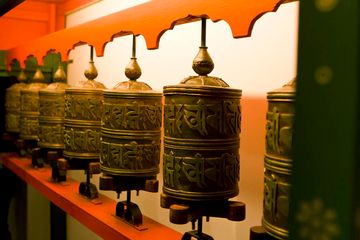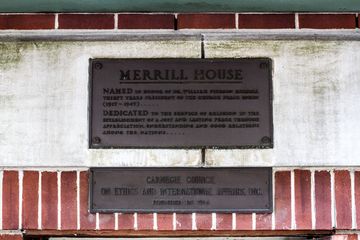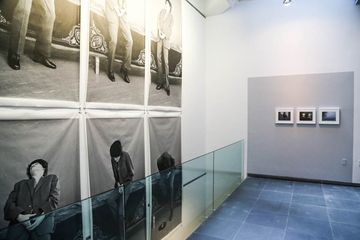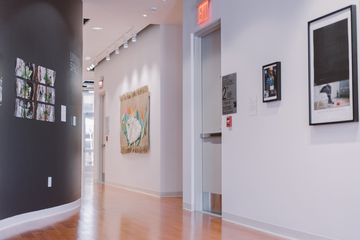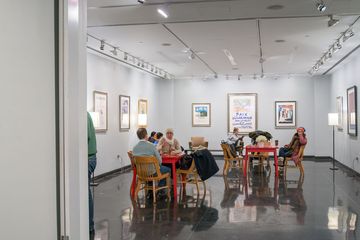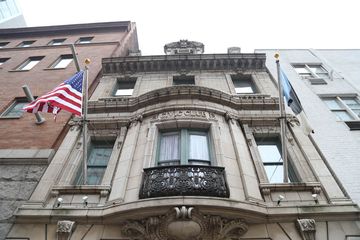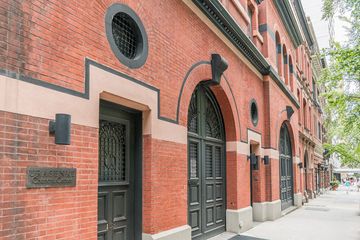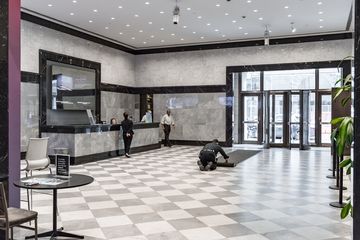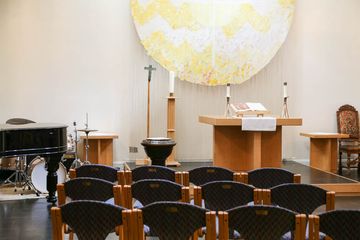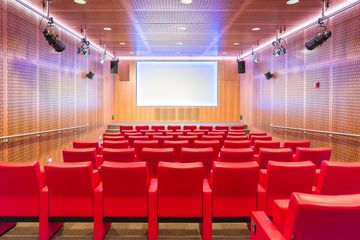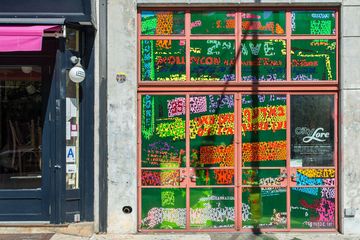Though not exactly hidden, since the grand exterior bedecked with flags makes it hard to miss, I still consider the Bohemian National Hall a hidden gem due to the magnificent spaces and programs cached behind its walls, unknown to local passersby. For a short time, my husband and I had an apartment a few doors down from this imposing building, and had the opportunity to step inside a couple times. However, it was Cynthia Sutherland - Public Relations head for the Czech Center at the Bohemian National Hall - who provided Manhattan Sideways with an in-depth look at each of the five floors. There are three main organizations residing in the building: The Czech Center, the Consulate General, and the Bohemian Benevolent and Literary Association. All these organizations work together to promote Czech culture. For anyone who associates "Bohemian" with Queen, Rent, or flowing hippie skirts (which, Cynthia informed me, is true for many people), Bohemia is a region in the Czech Republic that is famous for artistic expression, freedom of speech, and a strong sense of tradition. We began our tour in the theater on the first floor, where a film club meets on Tuesdays to watch a variety of movies. Cynthia explained that the Czech Center is open to different cultures, and has shown many works by American directors, with the only requirement being that the film must somehow link back to the Czech Republic. She also mentioned that most of the programs at the Bohemian National Hall are completely free, which was especially impressive considering the size and scope of the events. Cynthia then took us upstairs to see the gallery, which is accessed via a breathtaking spiral staircase. Stepping inside, we observed people setting up for their next exhibit, called "Czech Dream, " featuring art that explores the ideas of resignation, expectation, and uncertainty in Czech consciousness. Before moving to the next floor, Cynthia pointed out the meaningful quotes written on the wall in both Czech and English. "This building is a living, breathing thing with its own voice, " she explained. Venturing into the library, we were warmly greeted by Barbara Karpetova, the director of the Czech Center, who encouraged us to wander in the library, which is open to the public and often holds forums and readings. Cynthia then led us to the floor run by the BBLA, formed in 1892 so that Czech visitors to New York would have a place to go and meet with their fellow countrymen. Cynthia showed us a large plaque dedicated to Antonin Dvorak, explaining that the famous composer held concerts in the Bohemian National Hall and that the BBLA owns artifacts from his life, such as hand-written sheet music. We also learned that weddings, conventions, and concerts are still held in the spacious Study Center and recital room on this floor. Upstairs, our jaws dropped as Cynthia led us into a grand ballroom. The space can hold up to 300 people, not counting the balconies above. The magnificent stage that occupied one wall is a replica of a theater in Prague, and there is a full bar and kitchen off of the ballroom. Over the years, countless musicians, dancers, and theater troupes have performed on the stage. As we stood there, Cynthia enthusiastically mentioned that the Center was looking forward to a new concert series in 2016, called "Prague New York Effects, " where Czech and American artists will be working on a collaborative piece. "We like to call it an incubator, " Cynthia said. The artists will then visit the Czech Republic to perform their work in Prague. As we exited the ballroom, we noticed pictures of the renovation that took place in 2008. Cynthia explained that the goal of the renovation was to make the building look "Bold and bright and modern. " Everything we saw could certainly be described by those adjectives, including the state-of-the-art dressing rooms that we found on the balcony level. On the other side of the floor, we saw the meeting room in which the Czech president had recently sat. The cherry on the sundae, however, was the rooftop. With an outdoor bar and an area that can be covered against the elements, the roof hosts a variety of events throughout the summer. Cynthia told us that they had shown eight rooftop movies during 2015, subtitled in English, with complimentary champagne and strawberries. "This is a cultural haven, " Cynthia remarked as we were descending - and after exploring the beautiful hall from head to toe, we could not agree more. Cynthia, who commutes in every day from upstate New York, simply announced, "I love my job. When I'm here... it's amazing. " With countless events each month (where complimentary Czech beer is frequently served), the Bohemian National Hall should be on any New Yorker's radar. It is a great place to immerse oneself in fine quality Czech culture. Cynthia's closing line of the afternoon said it all, "To the Czech people, art is life. "
